A person from a well-respected engineering company made the statement, “Insulating precast concrete panel veneers is a nightmare”
“Insulating precast concrete panel veneers is a nightmare”
I re-ran the analyses using WUFI® Pro Version 5.2 for this paper.
- I selected a North orientation for the simulations as it has the least drying potential to the exterior since it is never exposed to direct sunlight. Therefore, it is the most likely orientation to fail in this climate region.
- I used the weather file for Boston in a cold climate for the exterior climate and the medium moisture load file for the interior climate.
The developers of WUFI® claim that the program can accurately model moisture transfer due to air flow, but I have my doubts. If the exact flow path and exact amount of the air can be determined, then WUFI® can accurately model moisture transport due to air flow. But I find this virtually impossible to determine accurately in an exterior wall assembly since we can never know how many imperfections that the people that built the wall included in the assembly nor what imperfections are added to the assembly after it is built. Thus air flow due to convection within the assembly was not included in the simulations.
This would be the least costly assembly due to the relatively low cost of furnishing and installing the batts insulation. I assumed that the precast concrete panels with sealant at the panel joints was the air barrier in the assembly.
This assembly failed also as the RH levels at monitor position 3 (Figure 4) remained above 80% for most of the simulation period. The steel attachment hardware for the precast concrete panel veneer are located in this area of the assembly and will corrode when subjected to RH levels above 80%. Monitor Position 4 (Figure 4) experienced RH levels above 80% for significant periods of time every Summer and Monitor Position 5 (Figure 5) experienced even higher RH levels and for greater periods of time. In watching the simulation, I saw that the added moisture within the insulation layer was coming from the precast panel as it has the ability to absorb and store moisture.
The results of the first four analyses convinced me that the insulation for this assembly needed to be very dense to the degree that the cell structure of the insulation was so small that a water droplet could not form within it.
The back side of the precast concrete panels is very rough. Installing the insulation over the back of the precast panel results in a considerable amount of air spaces between the two components.
There are also many paths for warm, humid interior air to infiltrate this space at the joints in the insulation and interface of the insulation with other building components. The warm, humid interior air infiltrating these air spaces could be cooled below its dew point temperature resulting in condensation, frost and/or ice on the back side of the precast concrete veneer panels. If the joints and interfaces of the extruded polystyrene insulation could be sealed, the amount of oxygen in the air of the air spaces would be finite and therefore corrosion of steel components would be limited if not eliminated. Based on decades of my experience in the construction industry, I didn’t think this would be possible because perfection does not exist in construction. This was tried, though.
A year or so later I e-mailed one of the engineers for the construction manager to ask him if there were any issues with the building. He informed me that the building was leaking at the exterior walls that had precast panel veneers and they could not figure out why.
The walls were not leaking. The warm humid air in the ware wash area was getting to the back side of the precast panels and resulting in the condensation, frost and ice that I mentioned earlier in this paragraph. This ruled out using any rigid board stock insulation for me.
Successful Exterior Wall Assembly
2# Density Spray Polyurethane Foam Insulation
BASF Spraytite® 81206
BASF Walltite®
Improving Energy Efficiency by 40%.
If you are also using the spray foam as the air barrier.

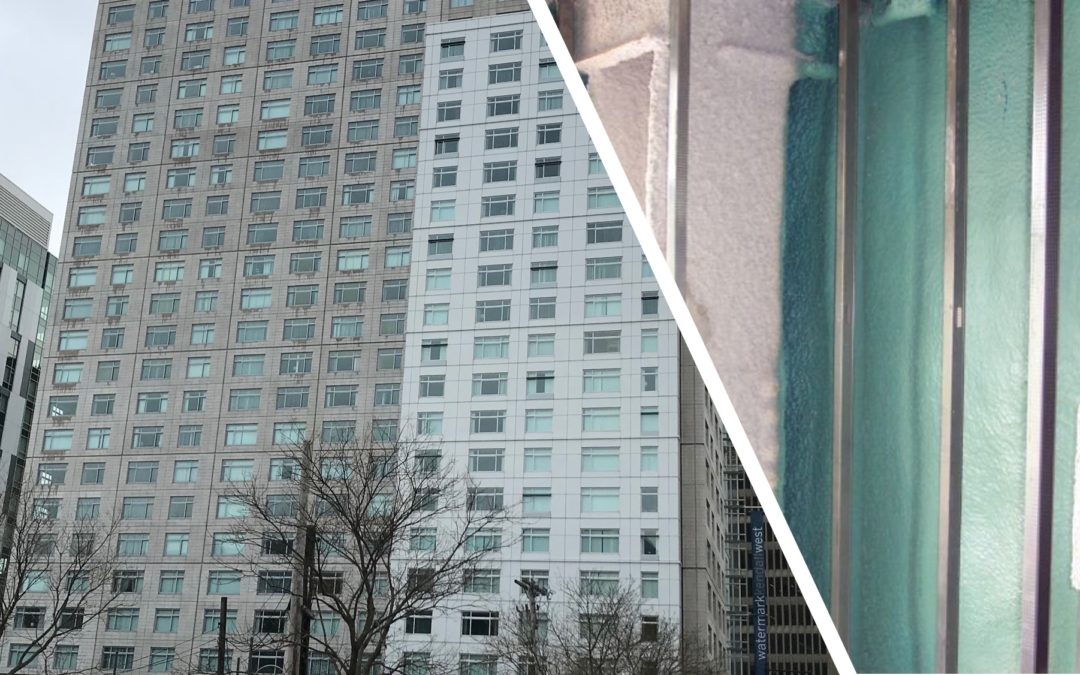
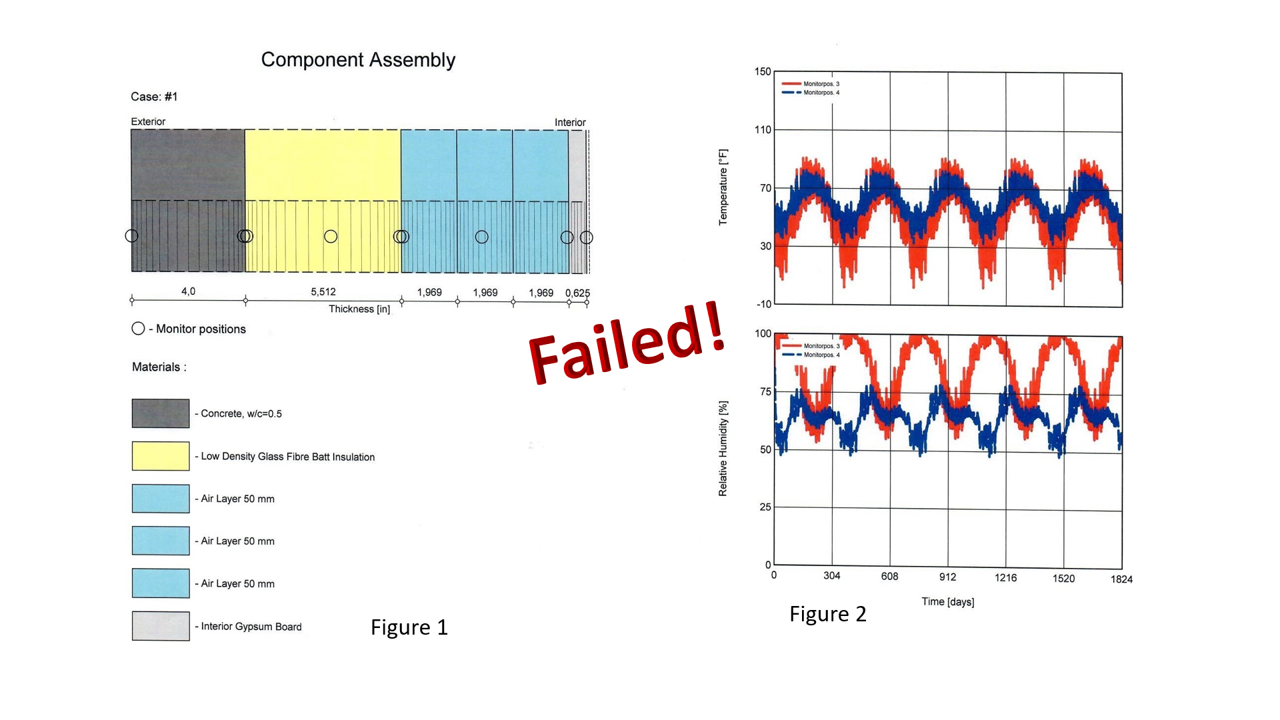














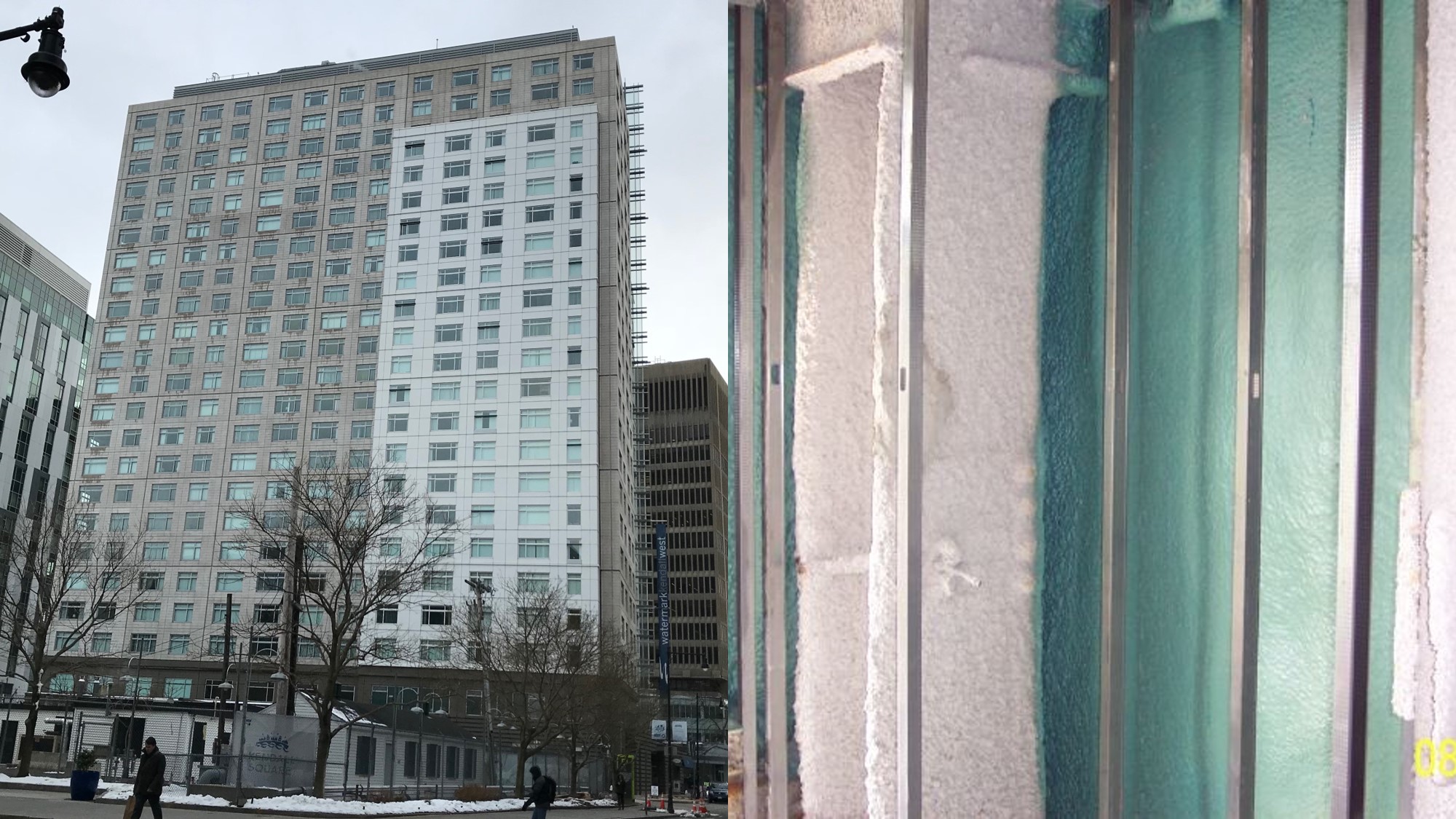
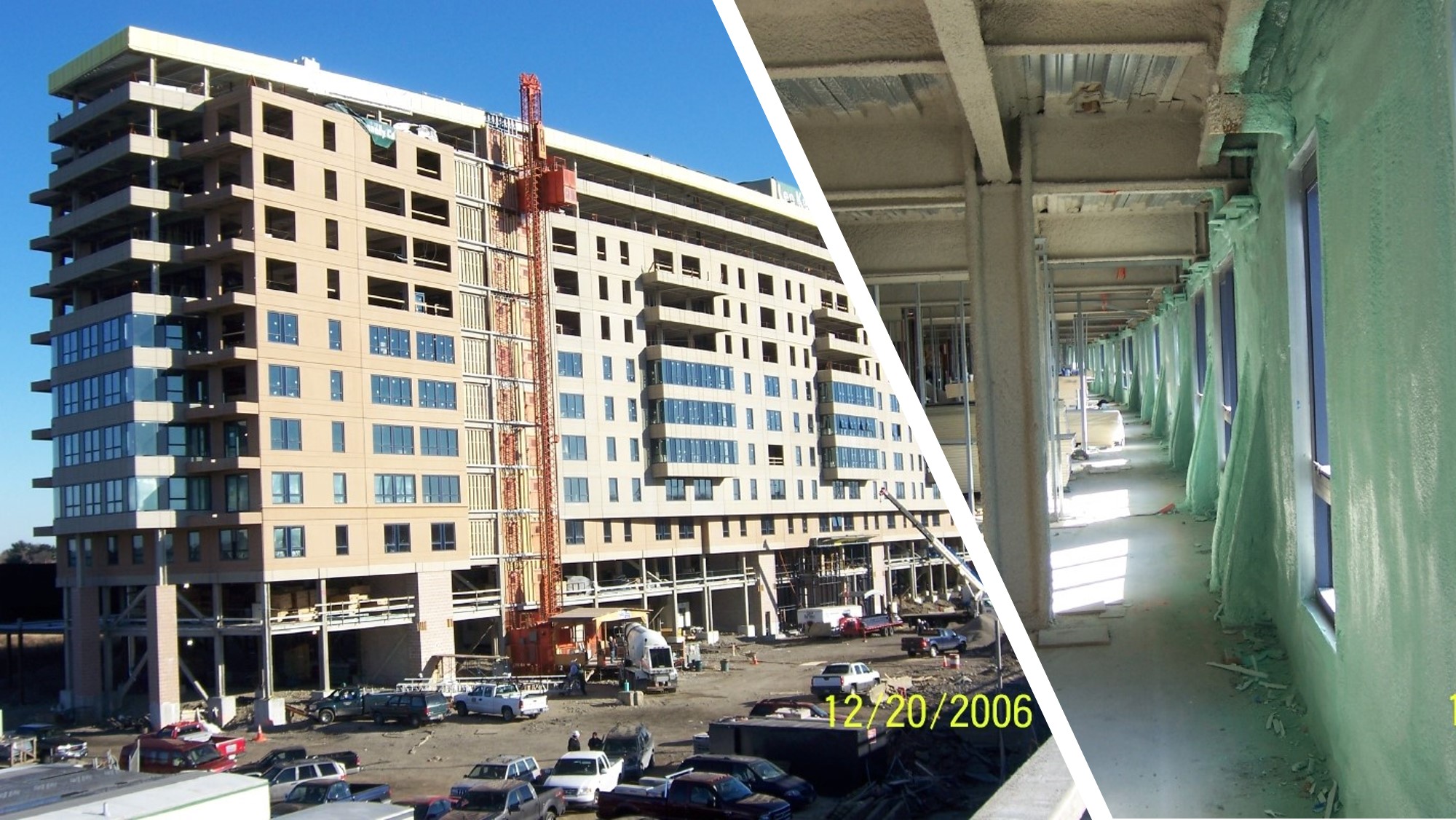

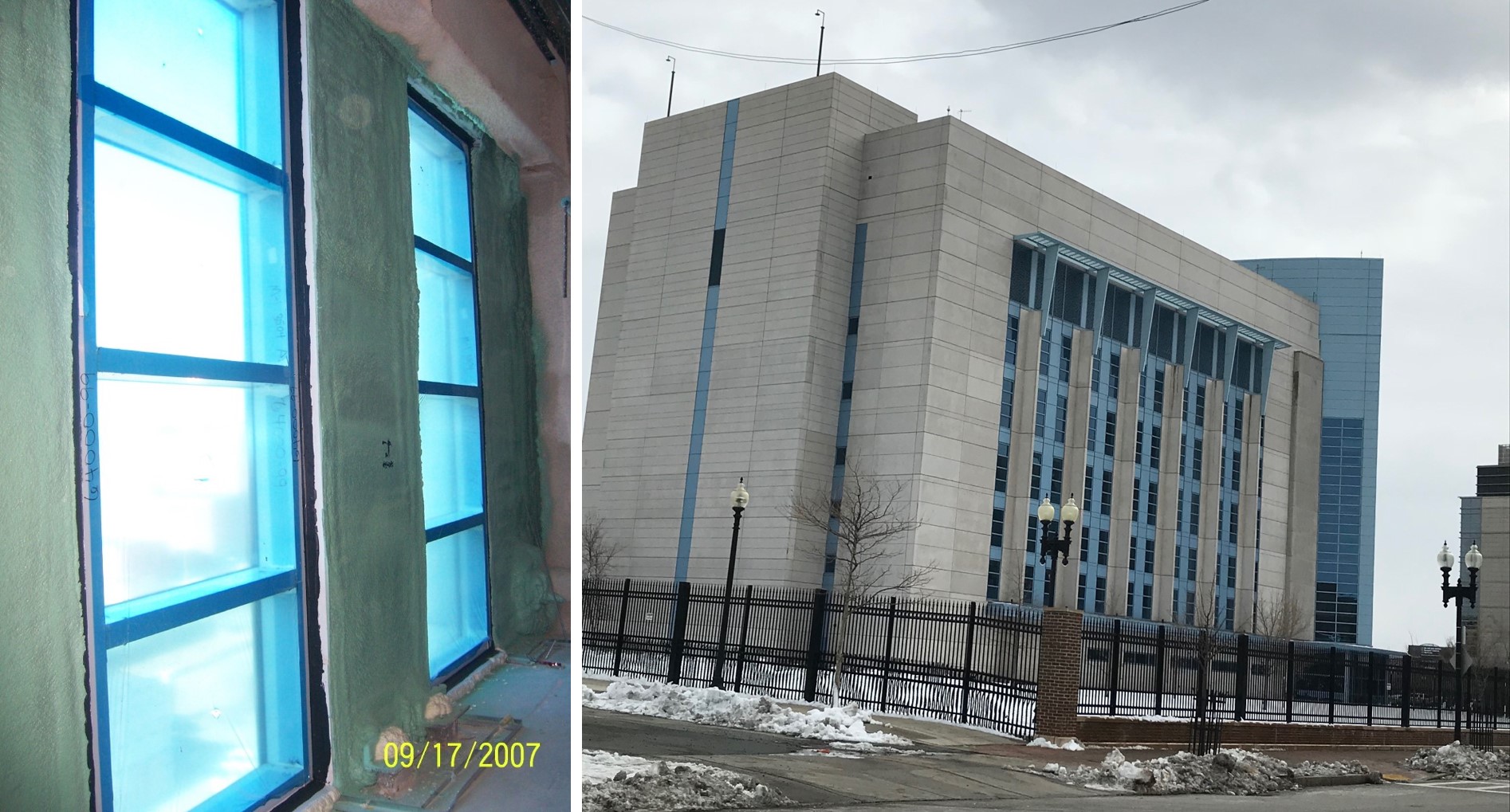
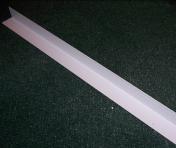
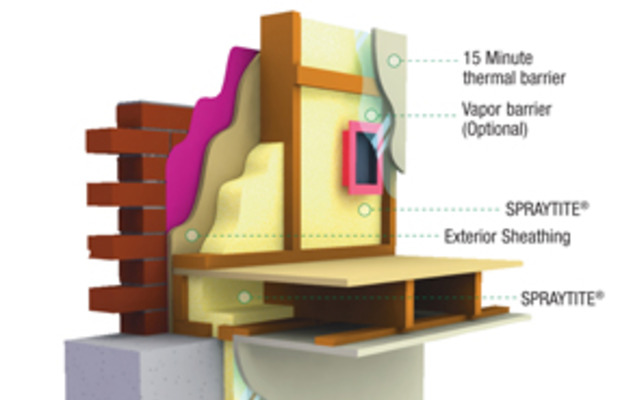
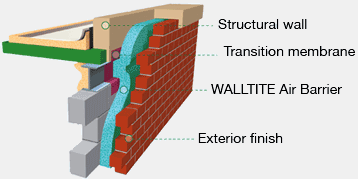

 Len Anastasi has been working in the construction industry for over 30 years in masonry, waterproofing and restoration work.
He currently owns EXO-TEC Manufacturing, Inc., EXO-TEC Solutions, Inc. and EXO-TEC Consulting, Inc.
In his construction and consulting work, he has performed inspections and repairs on over 300 buildings.
Len has given expert testimony in trials and reviews on dozens of legal cases.
He is a member of ASTM’s E 06 Committee, the Boston Society of Architects Building Enclosure Council, Air Barrier Association of America, the Construction Specifications Institute, and the International Concrete Repair Institute.
Book Len for your Next Event!
Len Anastasi has been working in the construction industry for over 30 years in masonry, waterproofing and restoration work.
He currently owns EXO-TEC Manufacturing, Inc., EXO-TEC Solutions, Inc. and EXO-TEC Consulting, Inc.
In his construction and consulting work, he has performed inspections and repairs on over 300 buildings.
Len has given expert testimony in trials and reviews on dozens of legal cases.
He is a member of ASTM’s E 06 Committee, the Boston Society of Architects Building Enclosure Council, Air Barrier Association of America, the Construction Specifications Institute, and the International Concrete Repair Institute.
Book Len for your Next Event! 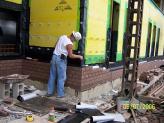
Len,
Thank you for the article and all the leg work. I have several questions: first, what if anything happens when the precast panel gets thicker? Most of my low to medium rise projects use loadbearing precast panels approaching 8” in thickness. Next, what happens at the interior finishes? I trust you are not allowing the CFMF (studs or Z furring) to abut the precast and allowing the insulating layer to be interrupted by thermal bridging. One could install the CFMF over the top of the installed insulation but all the fasteners to the precast panel will create numerous, albeit micro, gaps around the post-installed fasteners. The framing could span from floor to deck and not fasten to the precast panels but that would require larger framing and creep into the precious interior space.
I look forward to your reply and future articles. Thank you.
Thanks for the detailed information
Thank you for sharing